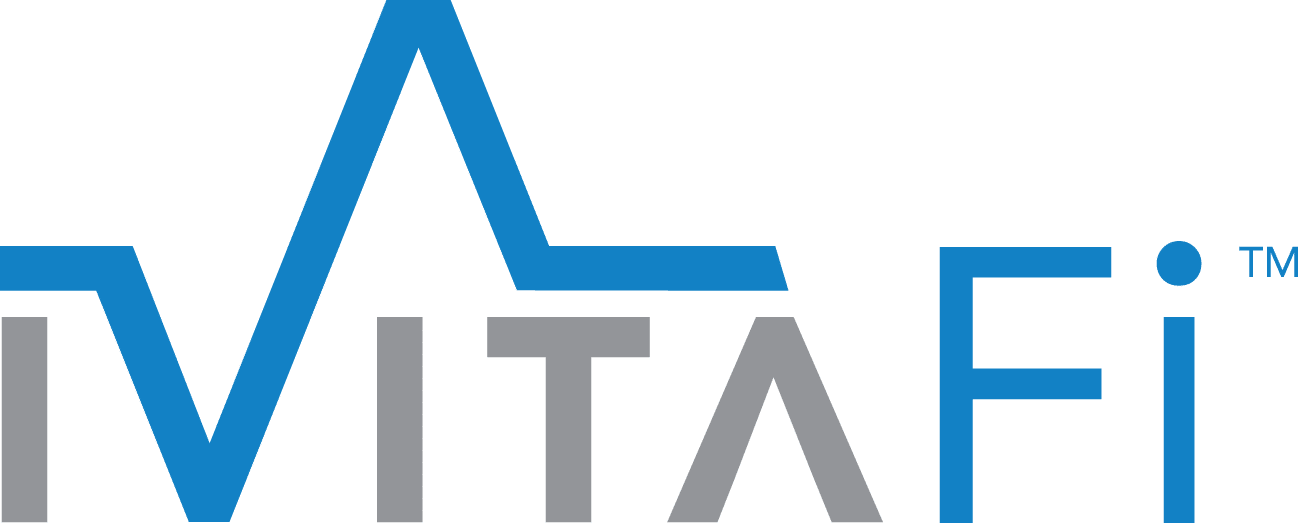Managing a healthcare practice involves more than just providing excellent care to patients. It also requires handling the financial side of things, including making sure bills are paid on time. One of the biggest challenges many healthcare providers face is dealing with bad debt, especially when it comes to self-paying patients. Bad debt happens when patients are unable to pay their medical bills, leaving the practice with unpaid accounts. This can hurt the financial health of the practice and create problems for both the provider and the patients.
One effective way to reduce bad debt is by offering patient financing options. Patient financing allows patients to pay their medical bills over time, making it easier for them to manage their payments and less likely that they will default on their bills. In this blog, we will discuss how implementing patient financing can help minimize bad debt, reduce the number of unpaid bills, and improve the overall financial health of your healthcare practice.
What is Patient Financing?
Patient financing is a payment option that allows patients to spread out the cost of their medical bills over time instead of paying the full amount upfront. This can be done through various methods, including:
- Interest-free payment plans: Patients can make smaller, manageable payments over several months without any added interest.
- Extended payment plans: Patients can pay over a longer period, reducing the amount they need to pay each month.
- Third-party financing: Healthcare providers partner with outside companies that offer loans or credit options to help patients cover their medical expenses.
By providing flexible payment options, patient financing helps patients afford the care they need while also helping healthcare providers reduce the risk of bad debt.
Why is Bad Debt a Problem for Healthcare Practices?
Bad debt is a significant problem for healthcare practices for several reasons:
- Financial Loss: When patients cannot pay their bills, the practice loses money. This can impact the practice’s ability to cover operating costs, such as rent, utilities, salaries, and medical supplies.
- Cash Flow Issues: Unpaid bills can create cash flow problems, making it difficult for the practice to pay its expenses on time. This can lead to a cycle of financial instability.
- Increased Administrative Costs: Managing unpaid bills and dealing with collections takes time and resources. Practices may need to hire additional staff or work with collection agencies, increasing administrative costs.
- Strained Patient Relationships: When patients cannot pay their bills, the relationship between the patient and the provider can be strained. Patients may feel embarrassed or avoid seeking future care, impacting their health outcomes.
How Patient Financing Reduces Bad Debt
Patient financing can be a game-changer for healthcare practices struggling with bad debt. Here’s how patient financing can help reduce bad debt and improve the financial health of your practice:
1. Making Payments More Manageable for Patients
One of the main reasons patients fail to pay their medical bills is that they find it challenging to pay a large amount upfront. Patient financing addresses this problem by breaking down the total bill into smaller, more manageable payments over time. This makes it easier for patients to fit their medical expenses into their budgets and reduces the likelihood of defaulting on their payments.
For example, if a patient faces a $1,500 medical bill, paying the entire amount upfront might be overwhelming. However, with a 12-month interest-free payment plan, the patient would only need to pay around $125 per month. This smaller amount is much more manageable, increasing the chances that the patient will pay their bill in full.
2. Reducing the Risk of Unpaid Bills
When patients are given the option to pay their bills over time, they are more likely to stay on top of their payments. This reduces the risk of unpaid bills, which can negatively impact a practice’s cash flow and financial stability. By offering patient financing, healthcare providers can increase the likelihood that patients will pay their bills on time, minimizing the risk of bad debt.
Patient financing also provides a structured payment plan that helps patients stay organized and committed to paying off their medical expenses. This structured approach reduces the risk of missed payments and helps ensure the practice receives the total amount owed.
3. Improving Patient Satisfaction and Trust
Patient financing can also improve patient satisfaction and build trust between patients and healthcare providers. When patients feel their financial concerns are being addressed and have options for managing their medical expenses, they are more likely to have a positive experience with their healthcare provider.
This positive experience fosters trust and loyalty, leading to better patient-provider relationships and increased patient retention. Satisfied patients are more likely to return for future care and recommend their provider to others, contributing to practice growth and a stronger reputation in the community.
By offering patient financing, healthcare providers can show they are committed to making healthcare accessible and affordable for all patients, leading to increased patient satisfaction and loyalty.
4. Streamlining Billing and Collections Processes
Patient financing can simplify the billing and collections process for healthcare practices. Instead of spending time and resources chasing unpaid bills or dealing with collections agencies, providers can rely on their financing partner to handle the payment process. This leads to more efficient operations and allows staff to focus on delivering high-quality patient care.
Streamlined billing processes can reduce administrative costs and improve cash flow by ensuring payments are collected promptly. This benefits the practice financially and enhances the overall patient experience by providing clear and straightforward payment options.
5. Encouraging Patients to Seek Necessary Care
Financial concerns are one of the main reasons why patients delay or avoid seeking medical care. When patients are worried about how they will pay for their treatment, they might decide to skip appointments, avoid follow-up care, or not fill prescriptions. This can lead to worse health outcomes and higher costs in the long run.
By offering patient financing, healthcare providers can encourage patients to seek the care they need without worrying about immediate financial strain. Knowing they have a payment plan in place can give patients the confidence to follow through with their treatment plans and take steps to improve their health.
For example, a patient who needs follow-up care after a procedure might delay the appointment due to cost concerns. However, with a patient financing plan, they can pay for the visit in smaller installments, making it more affordable. This encourages patients to keep up with their care and reduces the number of unpaid bills.
Benefits for Healthcare Providers
While patient financing offers clear benefits for patients, it also provides significant advantages for healthcare providers. By reducing bad debt, providers can enhance their practice’s financial health and operational efficiency. Here are some ways patient financing benefits healthcare providers:
1. Increasing Revenue and Reducing Financial Risk
By offering patient financing options, healthcare providers significantly improve their chances of collecting the full amount owed by patients. With non-recourse patient financing, the provider receives the total payment within days of the patient’s discharge. Since the financing partner assumes the risk, the provider is shielded from financial loss if the patient defaults. This arrangement minimizes the risk of bad debt and boosts the practice’s revenue. Additionally, by giving patients the option to pay over time, patient financing increases the likelihood they will complete their total payments, further reducing the provider’s financial risk.
2. Improving Patient Satisfaction and Loyalty
Offering patient financing can improve patient satisfaction and build loyalty by providing patients with flexible and manageable payment options. Satisfied patients are more likely to return for future care and refer others to the practice, contributing to a steady flow of new and repeat patients.
3. Streamlining Billing and Collections
Patient financing can simplify the billing and collections process for healthcare providers. Instead of spending time and resources chasing unpaid bills or dealing with collections agencies, providers can rely on their financing partner to handle the payment process. This leads to more efficient operations and allows staff to focus on delivering high-quality patient care.
4. Enhancing Practice Reputation and Competitiveness
Patient financing options can enhance a healthcare provider’s reputation as a patient-centric organization committed to accessibility and affordability. This reputation can differentiate the practice from competitors and attract more patients looking for compassionate and flexible care options.
How to Implement Patient Financing in Your Practice
Implementing patient financing in your healthcare practice requires careful planning and consideration. Here are some steps to ensure a successful integration:
1. Evaluate Your Patient Demographics and Needs
Understanding your patient population and their financial needs is crucial in selecting the right patient financing options. Consider factors such as average income levels, insurance coverage, and patients’ common financial challenges. This information will help you choose financing options that align with your patients’ needs and preferences.
2. Partner with a Reputable Financing Company
Partnering with a reputable patient financing company is essential to ensure a positive patient and provider experience. Look for a financing partner that offers fixed 0% interest, extended-term payment plans, transparent terms, and a straightforward application process. Additionally, consider their reputation, customer service, and experience in the healthcare industry.
3. Train Your Staff and Communicate Clearly with Patients
Once you have selected a patient financing partner, training your staff on the available financing options and how to communicate them to patients is essential. Ensure that staff members understand the benefits of patient financing and can effectively explain the options to patients.
Clear communication is key to helping patients understand their financing options and make informed decisions. Provide patients with written materials, such as brochures or information sheets, that outline the available payment plans and their benefits.
4. Monitor and Adjust Your Financing Strategy
Regularly monitor the performance of your patient financing program to ensure it meets the needs of your patients and your practice. Collect feedback from patients and staff to identify any areas for improvement or potential challenges. Be prepared to adjust your financing strategy as needed to better serve your patient population and achieve your practice goals.
Conclusion
Patient financing is a powerful tool that can significantly reduce bad debt for healthcare practices by making payments more manageable for patients and reducing the risk of unpaid bills. By offering patient financing options, healthcare providers can improve patient satisfaction, encourage necessary care, and build a stronger, more loyal patient base. At the same time, patient financing helps practices maintain financial stability, streamline billing processes, and enhance their reputation as patient-centric organizations.
By carefully implementing patient financing and partnering with a reputable financing company, healthcare providers can ensure that more patients have access to the care they need while strengthening their practice’s financial health and growth. Ultimately, patient financing benefits both patients and providers, helping to create a more accessible and sustainable healthcare system for everyone.
About iVitaFi
iVitaFi is a leading provider of non-recourse patient financing solutions, committed to making healthcare more accessible and affordable for all. We offer interest-free payment plans that cater to patients across all credit profiles, allowing them to pay for medical expenses over time without the burden of high interest rates or upfront costs. By partnering with healthcare providers, iVitaFi helps reduce financial stress for patients and improves provider revenue and patient retention through flexible, patient-friendly financing options. To learn more, visit www.ivitafinancial.com or call us at (888) 504-8482.

